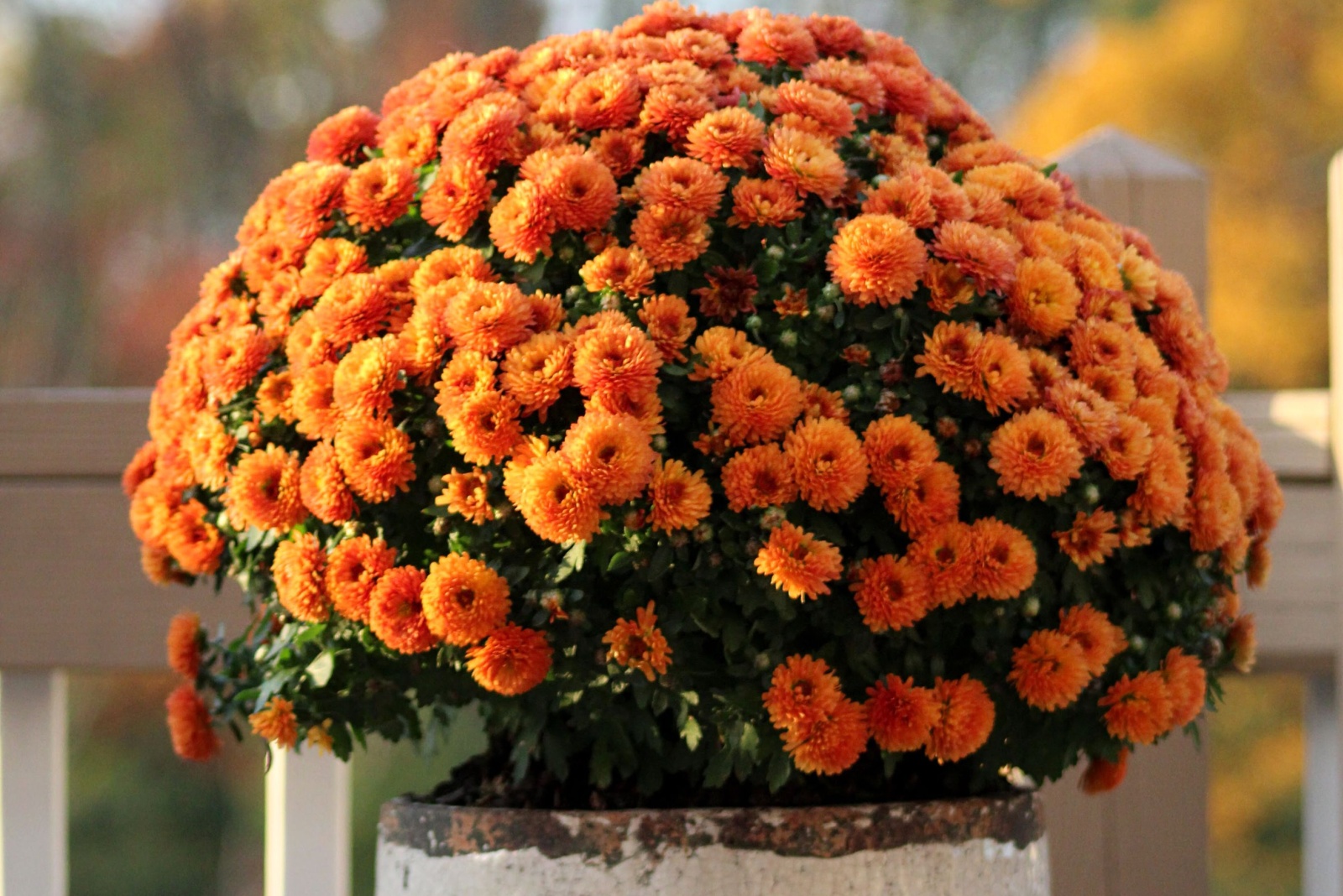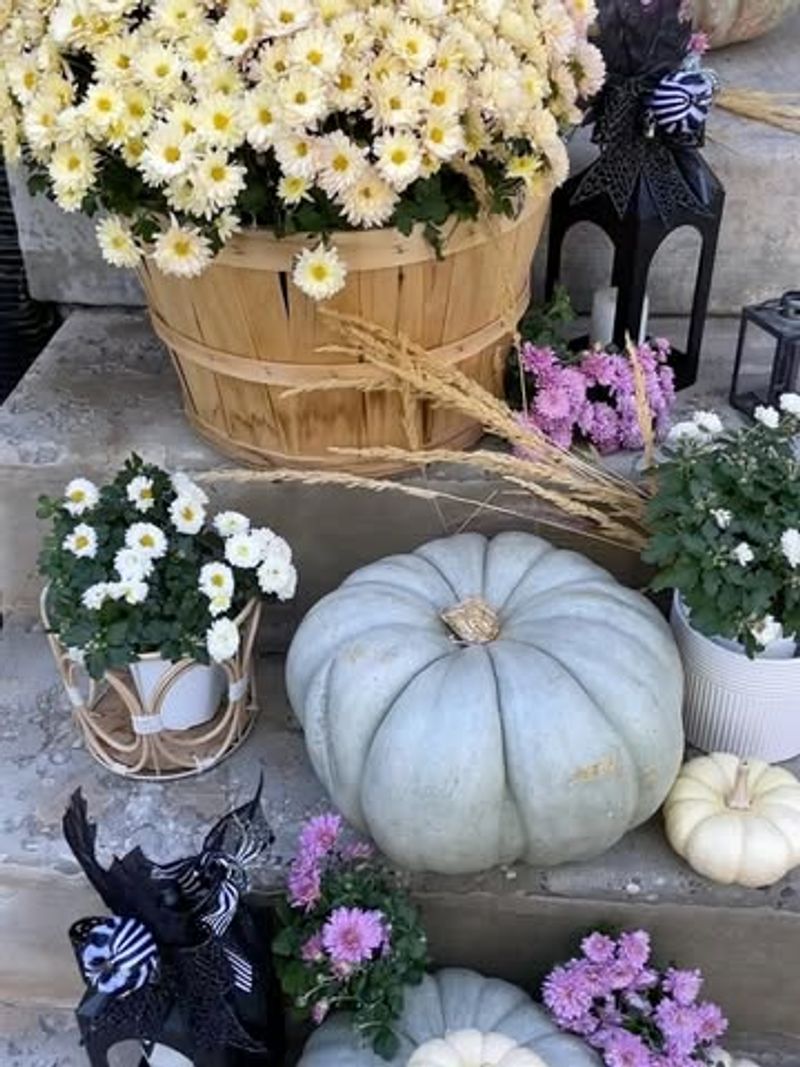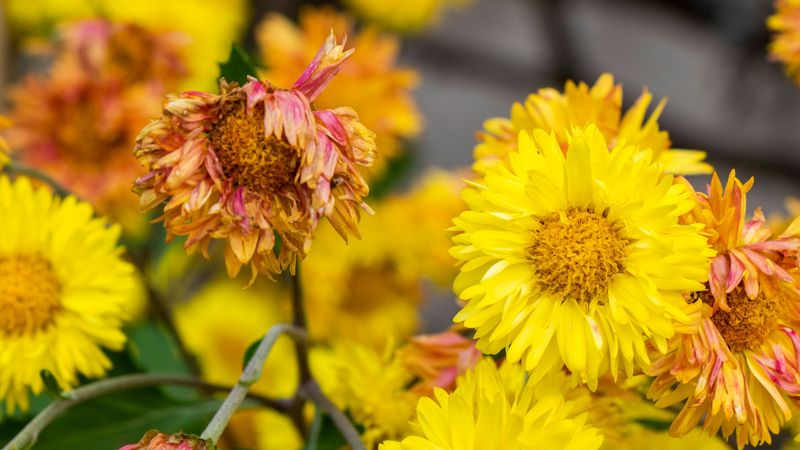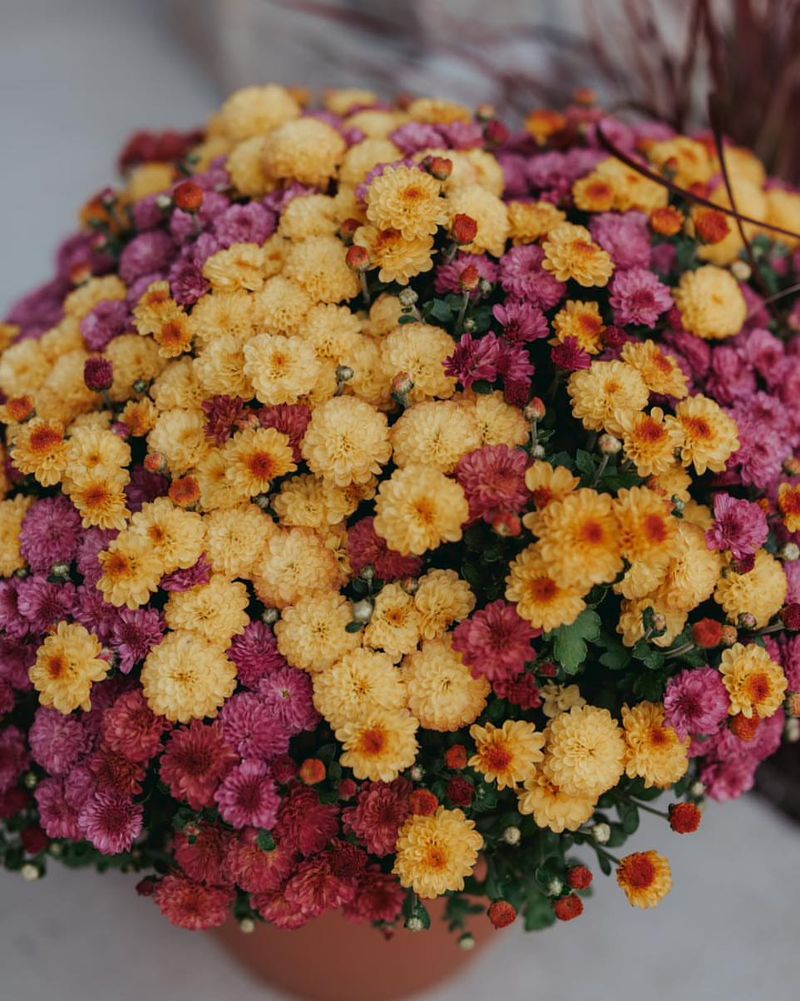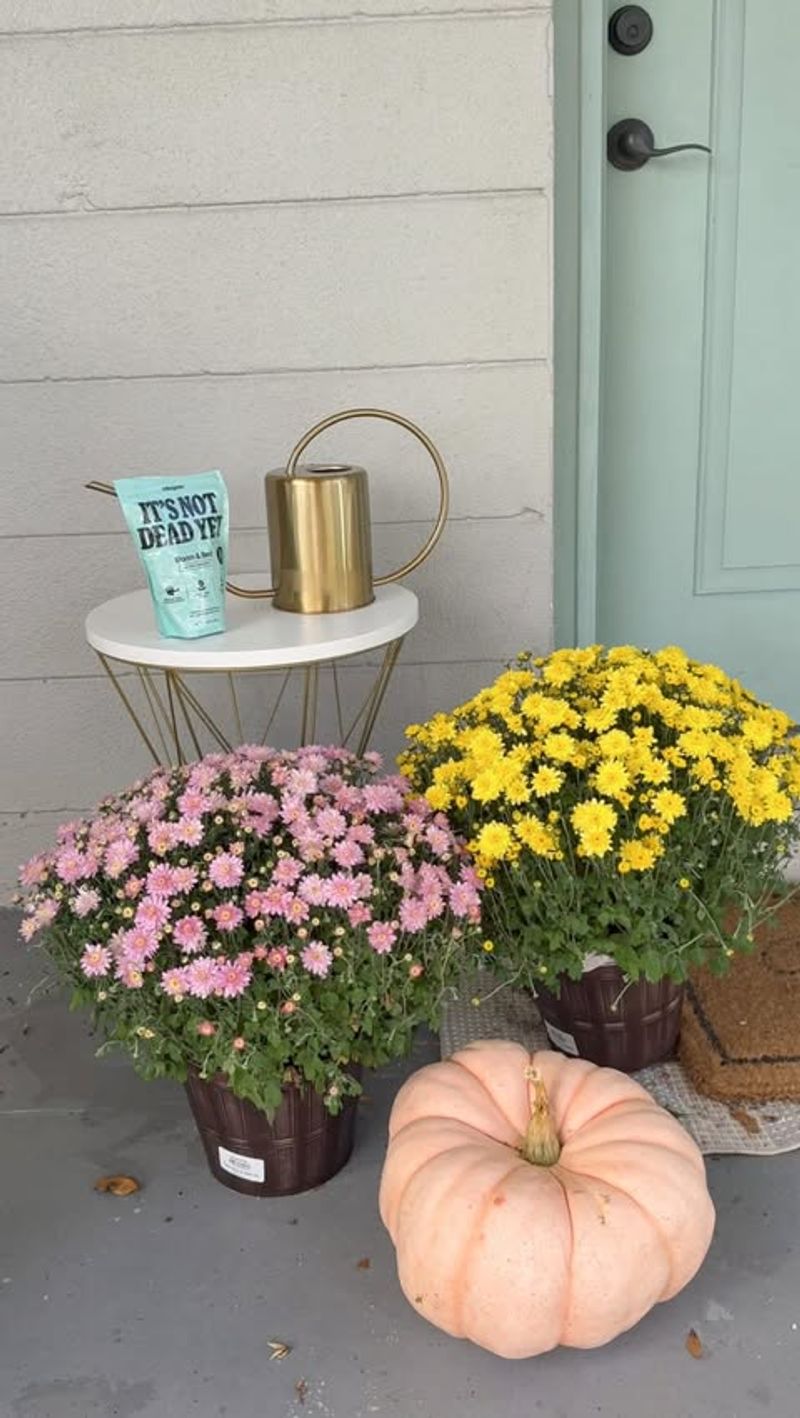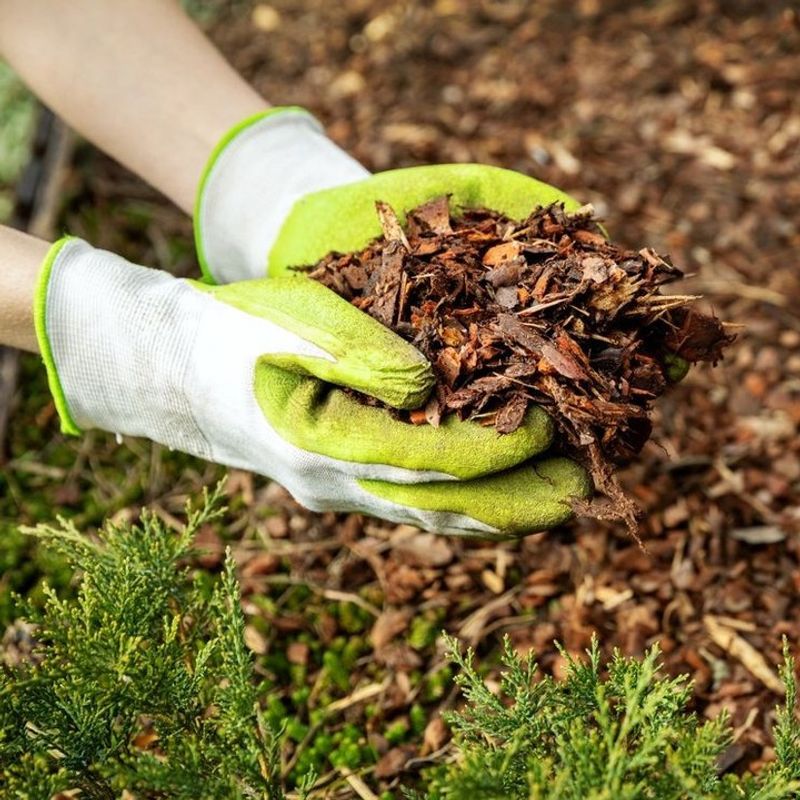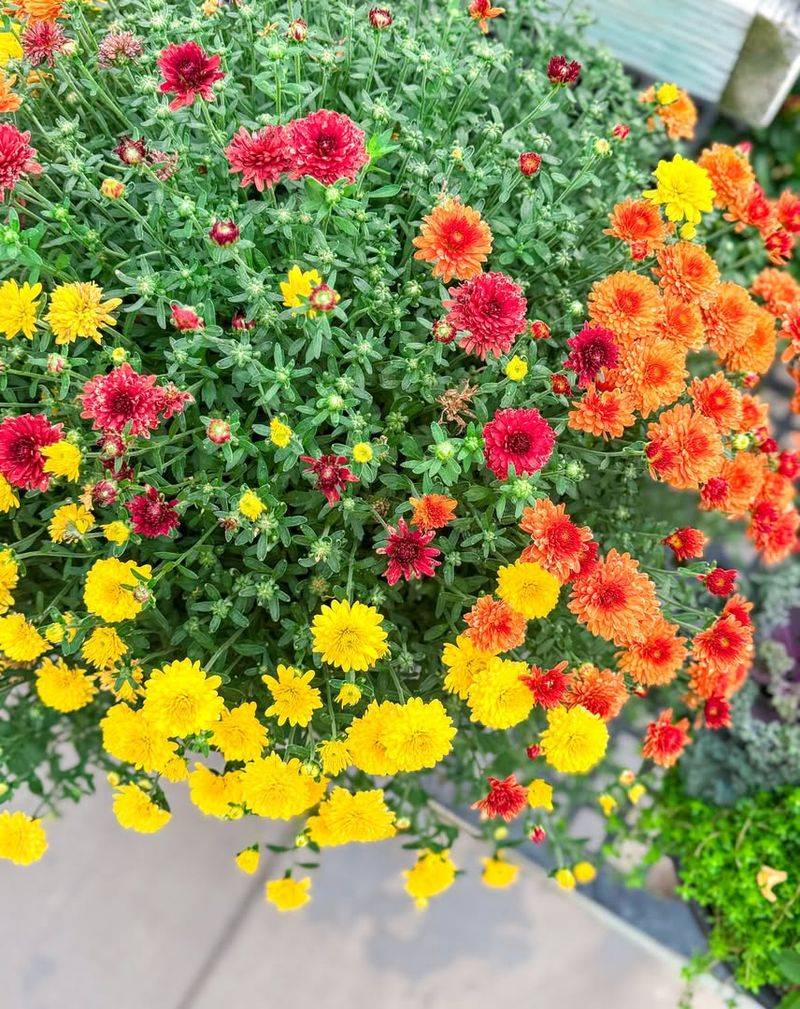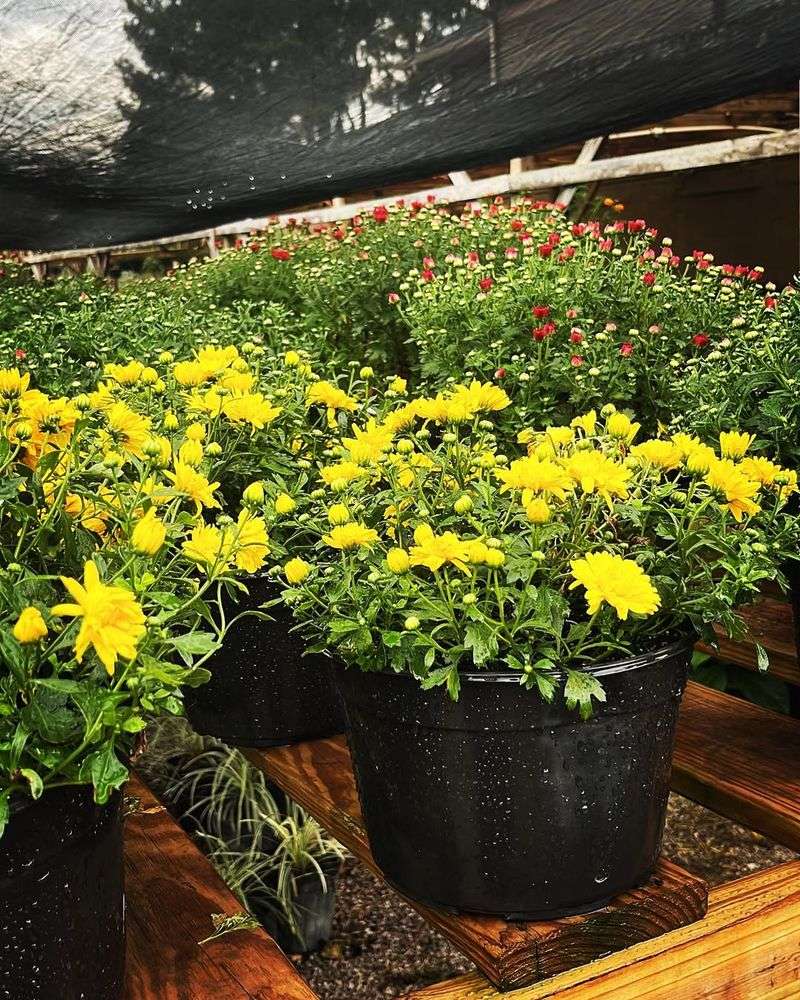Oregon’s cool fall weather is perfect for growing colorful mums, but keeping them fresh all season takes some know-how. These cheerful flowers can brighten your porch or garden from September through November if you give them the right care.
With a few simple tricks, your mums will stay vibrant and healthy without a single brown or crispy leaf ruining the show.
1. Water Consistently Every Morning
Mums are thirsty plants that need regular watering to stay perky and colorful. Oregon mornings can be chilly, but watering early gives plants time to absorb moisture before temperatures drop at night.
Check the soil daily by sticking your finger about an inch deep. If it feels dry, give your mums a good drink until water starts draining from the bottom of the pot.
Consistent watering prevents leaves from turning brown and crispy at the edges.
2. Choose The Right Planting Spot
Location matters more than you might think when it comes to keeping mums happy. Your plants need at least six hours of sunlight each day to produce those gorgeous blooms that make fall so special.
Pick a spot that gets morning sun but offers some afternoon shade, especially during warmer September days. Too much direct heat can stress the plants and cause wilting.
Good air circulation around your mums also helps prevent fungal problems common in Oregon’s damp climate.
3. Deadhead Spent Blooms Regularly
Removing faded flowers might seem like extra work, but it actually encourages your mums to produce more blooms. Pinch off dead blossoms right where they meet the stem using your fingers or small scissors.
This process, called deadheading, tells the plant to keep making new flowers instead of producing seeds. Spending just five minutes every few days can extend your mum’s blooming period by weeks.
Your plants will look tidier and more colorful throughout the entire season.
4. Protect From Early Frost
Oregon can surprise you with unexpected cold snaps in October and November. When temperatures threaten to dip below freezing, cover your mums with old bedsheets or frost blankets overnight.
Remove the covers in the morning once temperatures rise above freezing. Frost damage shows up as blackened, mushy leaves and flowers that never recover.
Potted mums can be moved closer to your house or under an overhang where they’ll stay a few degrees warmer during chilly nights.
5. Feed With Balanced Fertilizer
Well-fed mums stay healthier and produce more vibrant flowers that last longer. Use a balanced liquid fertilizer with equal amounts of nitrogen, phosphorus, and potassium every two weeks.
Mix the fertilizer according to package directions and apply it after watering to avoid burning the roots. Feeding your plants gives them the energy they need to keep blooming despite cooler temperatures.
Stop fertilizing by late October since plants naturally slow down as winter approaches and don’t need extra nutrients.
6. Mulch Around The Base
Adding a two-inch layer of mulch around your mums helps regulate soil temperature and keeps moisture from evaporating too quickly. Bark chips, compost, or shredded leaves all work great as mulch materials.
Keep the mulch about an inch away from the plant stems to prevent rot problems. Oregon’s rainy fall weather means mulch also prevents mud from splashing onto lower leaves during downpours.
This simple step reduces how often you need to water while keeping roots comfortable.
7. Avoid Overhead Watering
Splashing water on leaves and flowers creates the perfect environment for fungal diseases that thrive in Oregon’s humid fall conditions. Always water at the soil level, directing the stream toward the roots instead of the foliage.
Wet leaves take longer to dry in cool weather, increasing the risk of powdery mildew and leaf spot. Using a watering can with a long spout makes it easy to water precisely where needed.
Keeping foliage dry helps prevent those unsightly brown spots and crispy edges.
8. Pinch Back Leggy Growth
Sometimes mums get tall and spindly instead of staying compact and bushy. If you notice stems stretching out or the plant looking unbalanced, pinch back the longest shoots by about an inch.
This encourages side branching and creates a fuller, more attractive shape. Early fall pinching works best, but stop by mid-September to avoid removing developing flower buds.
A bushier plant displays more blooms and looks healthier, making your fall display even more impressive throughout the season.

